My friend Ulli handed me a large Tupperware container. "A present," she said.
A peak under the lid revealed a large pile of horse manure—always a nice gift for an organic gardener. But this wasn't just any horse manure, this was special horse manure: it had sprouted a massive colony of a dung-loving fungus called Pilobolus, also known as the Dung Cannon or Hat Thrower.
 |
| Golden clusters of Pilobolus lentiger on horse dung. |
Pilobilus species, (which, like the Spinellus and Syzygites I wrote about in my last post, belong to the order Mucorales), are impressive little coprophiles that, despite their smelly choice of substrate, are not only well-studied, but have even managed to hit the news as the "Fastest Living Thing on the Planet."
Copriphilous fungi evolved to produce fruiting bodies in animal waste, and the way the spores that produce these fruiting bodies get into that waste is usually via the gut, which means the spores first need to be ingested. There's a problem with this scenario, though: herbivores shun their own, and others' excrement when they're grazing. Each animal, in fact, has its own well-defined "zone of repugnance." So how to get the spores far enough away from the dung to be eaten? Build a squirt gun, that's how—at least that's how Pilobolus species do it. And impressive squirt guns they are. Some are capable of expelling spores more than six feet (2 m) away, which, in human terms, would be like having a kid's water pistol that could hit a target 500 ft. (150 m) away.
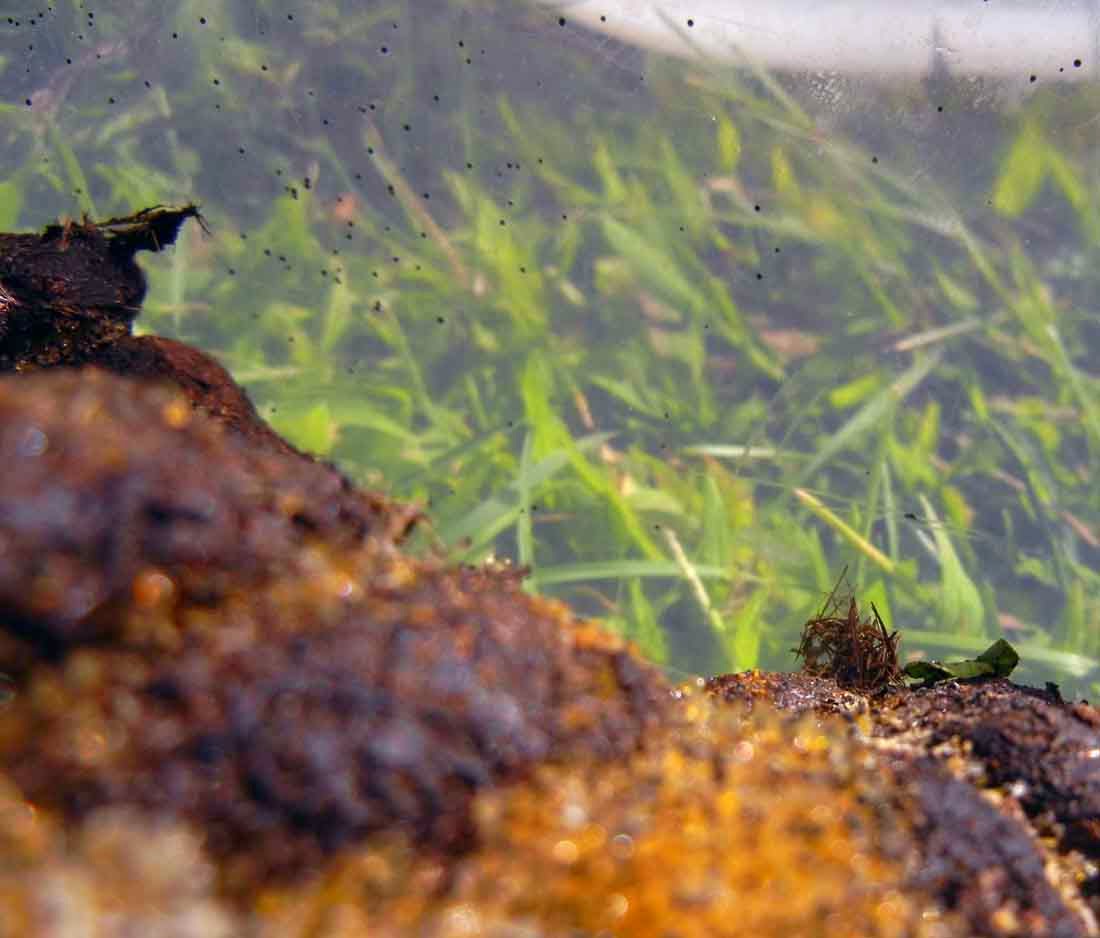 |
| The spore capsules launched by Pilobolus species are coated with a sticky material that glues them to nearby blades of grass or, in this case, the wall of a plastic container. |
Using only the normal, osmosis-generated pressure levels of fungi cells, Pilobolus spores are launched so fast that, until recent advancements in high-speed photography, the action was invisible to the human eye. Though the spore packets only reach maximum speeds of 25 meters per second, which isn't exactly shabby for something less than a millimetre in diameter, their acceleration is stupendous—up to 180,000 G! I witnessed this spectacular feat, or more accurately was its target, while trying to take close-ups of these tiny fungi. I felt a distinct ping! on my cheek, then another on my forehead, then another on my lip. It felt strange to be under attack by tiny missiles, stranger still to know that these missiles were probably being aimed at sunlight reflecting off my face.
 |
| Pilobolus lentiger (=Pilobolus sphaerosporus) |
Structurally, a single Pilobolus consists of a long, thin sporangiophore that is expanded at the end into the subsporangial vesicle. The fluid-filled vesicle is capped by a black sporangium, or spore packet, with resistant walls. Orange pigments inside the sporangiophore act as light sensors which, in conjunction with the subsporongial vesicle that functions as a lens, allow the fungus to track light and angle towards it. In essence, Pilobolus have "eyes," eyes that aim for the brightest light around, the sun. Their aim is pretty amazing, too. You can place them in a dark box with a single pinhole of light and after a few hours you will find their spore capsules glued in a tight cluster around the pinhole.
Some Pilobolus species, like my P. lentiger, also have rhythm. Not that they're dancers, (though maybe with time-lapse photography and a moving light source it might appear as if they're dancing—anybody?), but there's rhythm to their sporulation. When researchers placed them in either continuous light or continuous dark, sporangia were discharged almost continuously. But in a half-day-of-light/half-day-of-dark cycle, they consistently discharged sporangia most vigorously 6 hours after the light period began.
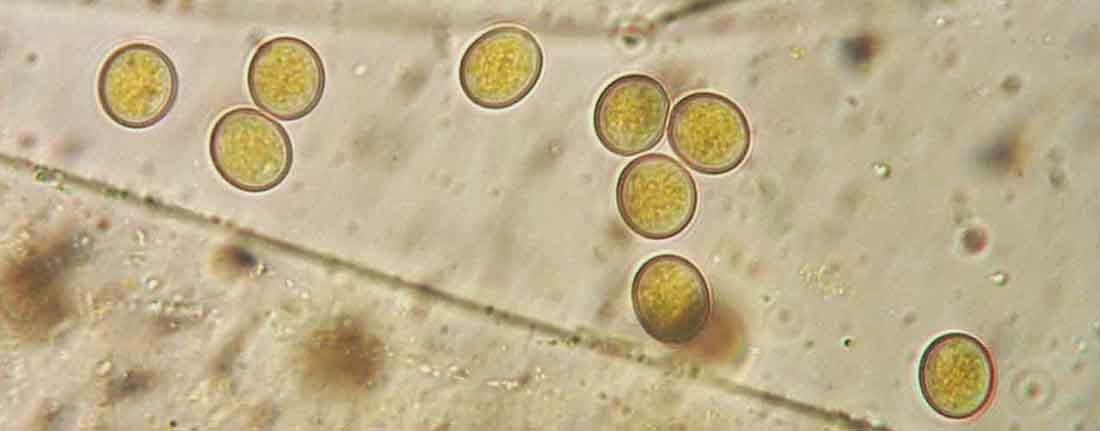 |
| Pilobolus lentiger spores are yellow and globose. |
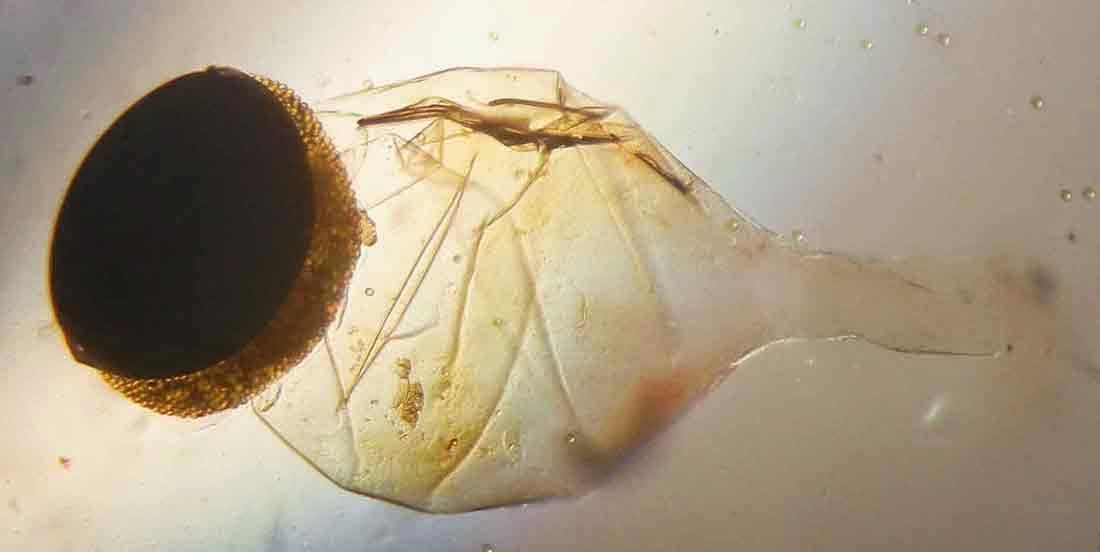 |
| The black sporangium with its load of spores—the missile part of Pilobolus—sits like a hat on top of the subsporangial vesicle. |
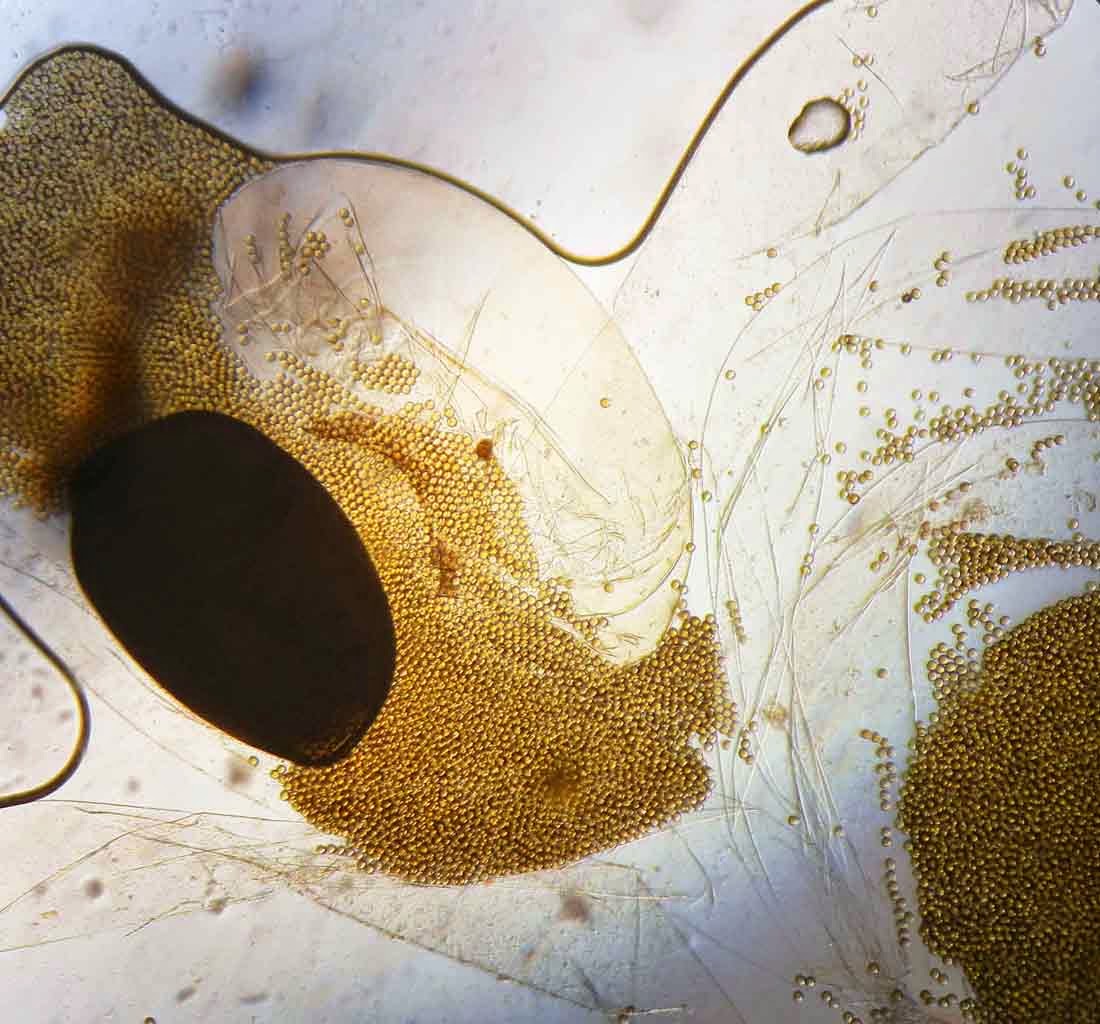 |
| The spore capsule easily ruptures under the weight of a cover slide. |
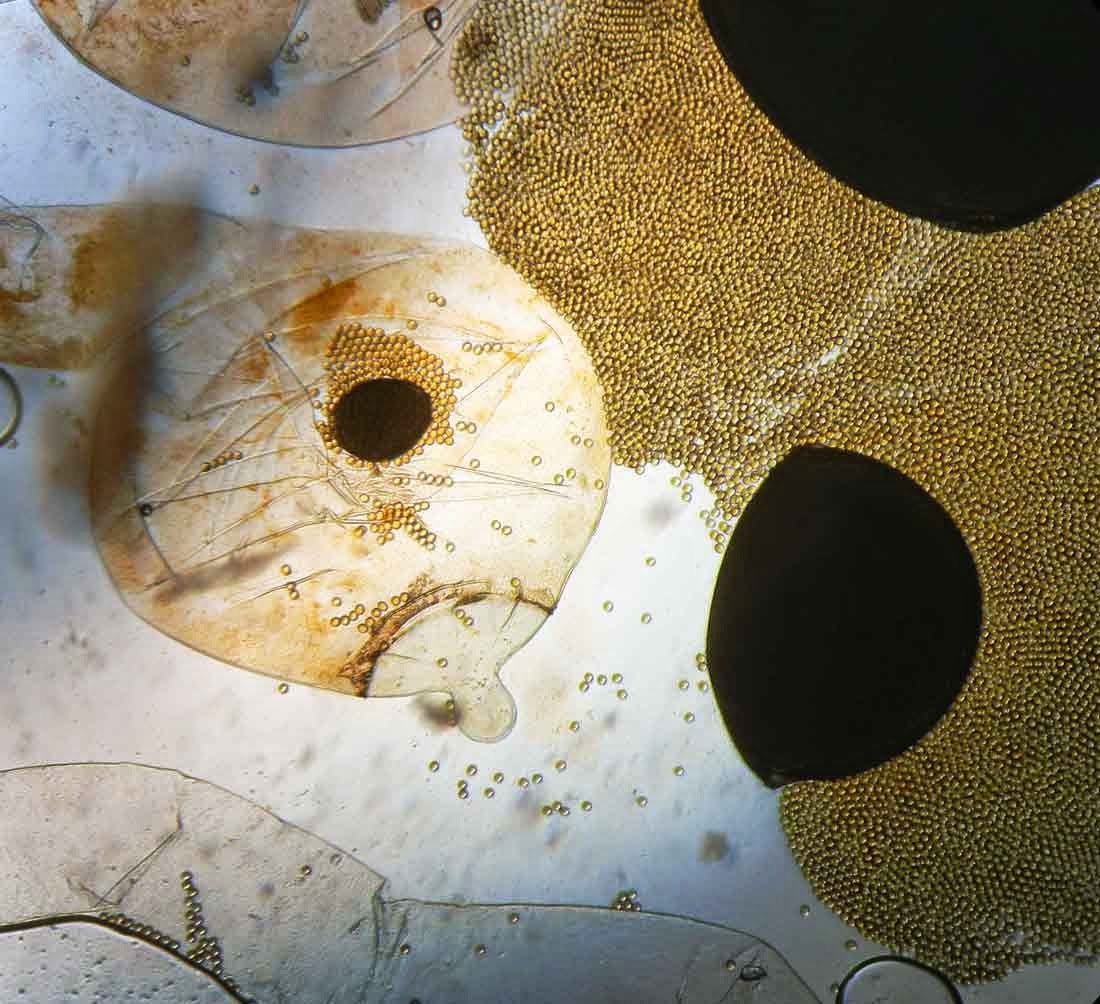 |
| The columellae that the sporangium sits on before discharge are mammiform in Pilobolus lentiger. |
 |
| I didn't realize until it was too late that my Pilobolus specimens had been aiming sporangia missiles at the lens of my camera as well as my face while I was photographing them outside, hence the dark smudges on all my micro pics. |
Reference & Resources:
Key and descriptions of Pilobolus species found in BrazilMicoquebec's key to Pilobolus species
Spores of a few Pilobolus species
Bruce, V. G., F. Weight, and C. S. Pittendrigh. 1960. Resetting the sporulation rhythm in Pilobolus with short light flashes of high intensity. Science 131:728–30.
"Spore Ballistics" with a nice little video of spores discharging set to music
Cornell Mushroom Blog post on the connection between
Pilobolus and lungworm
Fun videos
The Fastest Living Thing on the Planet
18 hour time lapse of Pilobolus crystallinus (if only they'd moved the light around they would have been dancing!)

This is a GREAT article, crammed with fascinating things! I would LOVE to see a photo of the spore capsules clustered around a pinhole in a box. And the slides showing the spores spilling out of the spore capsule are very satisfying. Thanks for this!
ReplyDelete